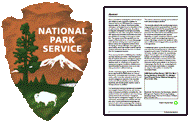United States National Park Service

United States National Park Service: Publications
Date of this Version
2008
Citation
JOURNAL OF WILDLIFE MANAGEMENT 72(8):1693–1705; 2008; DOI: 10.2193/2008-007
Abstract
We present the first rigorous estimate of grizzly bear (Ursus arctos) population density and distribution in and around Glacier National Park (GNP), Montana, USA. We used genetic analysis to identify individual bears from hair samples collected via 2 concurrent sampling methods: 1) systematically distributed, baited, barbed-wire hair traps and 2) unbaited bear rub trees found along trails. We used Huggins closed mixture models in Program MARK to estimate total population size and developed a method to account for heterogeneity caused by unequal access to rub trees. We corrected our estimate for lack of geographic closure using a new method that utilizes information from radiocollared bears and the distribution of bears captured with DNA sampling. Adjusted for closure, the average number of grizzly bears in our study area was 240.7 (95% CI¼202–303) in 1998 and 240.6 (95% CI¼205–304) in 2000. Average grizzly bear density was 30 bears/ 1,000 km2, with 2.4 times more bears detected per hair trap inside than outside GNP. We provide baseline information important for managing one of the few remaining populations of grizzlies in the contiguous United States.

